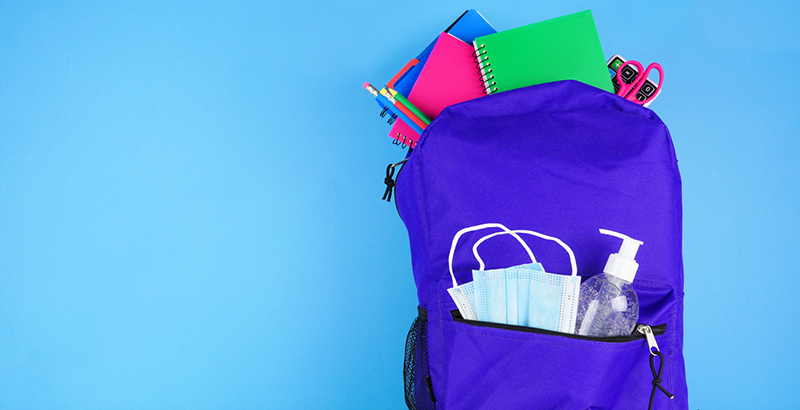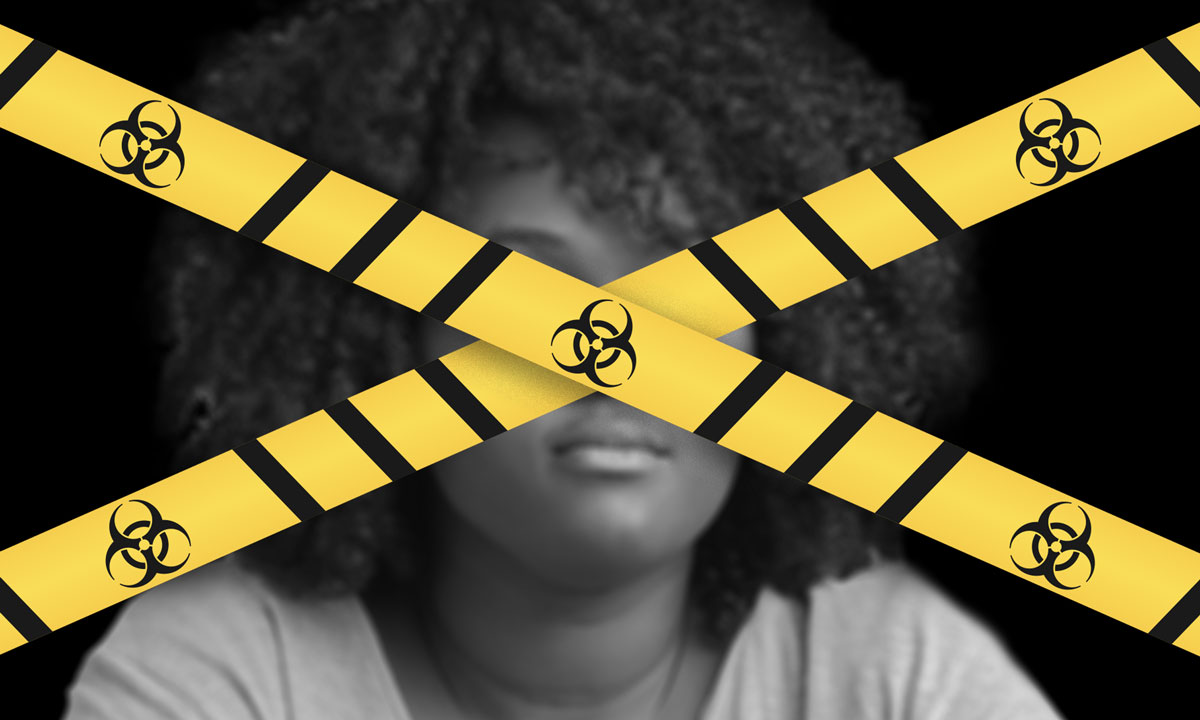COVID Brief: New Data Reveals Rapid Rise of XBB.1.5 Variant
A weekly roundup of headlines about how the pandemic is shaping schools and education policy, vetted by AEI Visiting Fellow John Bailey

Get stories like this delivered straight to your inbox. Sign up for The 74 Newsletter
We need your help: Please take this short survey to share what you think of this series.
This is our weekly briefing on the pandemic, vetted by John Bailey. See the full archive.
This Week’s Top Story
New Data Reveals XBB.1.5 Variant Surge in Recent Weeks
- Made up 40.5% of confirmed U.S. cases for the week ending Dec. 31. That’s up about 20% from the week ending Dec. 24.
- Good summary of what is known about the variant.
- Eric Topol: “New York is the bellwether for what is happening with XBB.1.5, and it doesn’t look good with a marked rise in hospitalizations, especially among seniors, in recent weeks as this variant has been taking hold. Of course, other factors are likely contributing, such as waning of immunity, indoor/holiday gatherings, cold weather, lack of mitigation. But it is noteworthy that New York’s COVID hospital admission rate is the highest since late January [2022] (and also exceeds the summer 2021 Delta wave, but with some ambiguity as to how hospitalizations were categorized then and now).”
- White House COVID director Dr. Ashish Jha shared what we know and don’t know.
The Big Three

Quarantines, Not School Closures, Led to Devastating Losses in Math and Reading
- I have a piece up on The 74 that explores the academic disruptions caused by COVID quarantines and how few districts had plans for live instruction.
- “Quarantine guidance from the CDC required an entire class of students to be sent home for as long as two weeks if they had close contact with a child who tested positive. The result was massive learning disruptions that occurred throughout the school year, even in states where schools were officially reopened.”
- “A bipartisan poll conducted by Public Opinion Strategies and Impact Research found that on average, children missed five weeks’ worth of school in the first half of the academic year, due in part to quarantines.”
- “Only four of the largest 100 districts promised live instruction for quarantined students, and just 36% of quarantined students reported having live classes with teachers.”
- “Even more devastating: A review of data from the Census Bureau’s Household Pulse Survey from March to June 2022 found that on average, a staggering 16% of students said they had no live contact with teachers over the previous seven days.”
- “It’s little wonder then that 7 out of 10 students found quarantine to be disruptive to their learning. And it should not be surprising that so many disrupted school days and so little interaction with teachers would contribute to the academic loss reflected in the NAEP scores.”
Racial Equity Effects of Pandemic Schooling Disruptions in Washington
- The Washington Joint Legislative Audit and Review Committee released a new report / PowerPoint deck / dashboard.
- Washington Legislative Auditor’s conclusion: “Racial disparities in student assessment scores increased during the COVID-19 pandemic, especially in higher-poverty schools. [The Washington Office of Superintendent of Public Instruction] does not yet have a process to monitor the effectiveness of federally funded interventions to promote learning recovery.”
- “Student assessment scores [for all groups] declined during the pandemic. School poverty level had the greatest association with assessment scores.”
- The superintendent’s office “has not yet established processes to monitor districts’ efforts to address the pandemic’s academic effects or the outcomes of emergency spending.”
In-Person Schooling and Youth Suicide Patterns
- NBER paper: “We document three key findings. First, using data from the National Vital Statistics System from 1990-2019, we document the historical association between teen suicides and the school calendar. We show that suicides among 12- to-18-year-olds are highest during months of the school year and lowest during summer months (June through August).”
- “Second, we show that this seasonal pattern dramatically changed in 2020. Teen suicides plummeted in March 2020, when the COVID-19 pandemic began in the U.S., and remained low throughout the summer before rising in fall 2020, when many K-12 schools returned to in-person instruction.”
- “Third, using county-level variation in school reopenings in fall 2020 and spring 2021 — proxied by anonymized SafeGraph smartphone data on elementary and secondary school foot traffic — we find that returning from online to in-person schooling was associated with a 12% to 18% increase teen suicides.”
- “Auxiliary analyses using Google Trends queries and the Youth Risk Behavior Survey suggests that bullying victimization may be an important mechanism.”
Federal Updates
Education Department: Released Elementary and Secondary School Emergency Relief Fund Fiscal Year 2021 Annual Performance Report
- “In FY 2021, roughly 43% of expended funds from subgrants to [local education agencies] were used to meet students’ academic, social, emotional and other needs. This represents the largest category of LEA subgrant expenditures.”
- “Over 2,700 LEAs expended ESSER funds on mental health supports.”
- “For FY 2021, 44% of expended funds from subgrants to LEAs were used for personnel, including salaries and benefits for additional staff and additional staff time to address the impacts of lost instructional time.”
- Related: FutureEd provides a state-by-state analysis of ESSER spending using the latest Education Department data.
Federal Spending Package: Congress reached consensus around a $1.7 trillion Omnibus. Some highlights:
- Total for Education Department: $79.6 billion (+$3.2 billion). Title I: $18.4 billion (+$850 million). The bill also directs the department to target $87 million within the Education Innovation and Research grant program to support SEL grants and an additional $87 million for STEM. The bill also directs the Institute of Education Sciences to “support a new funding opportunity for quick turnaround, high-reward scalable solutions.”
- Mental Health: $5.27 billion (+803 million), including $111 million for school-based mental health grants at the Department of Education.
- The National Science Foundation is in line for $10 billion in funding, the largest dollar increase ever for the agency and the largest percentage increase in two decades.
- Related: Omnibus Bill Includes Substantial New Funds for Education R&D
COVID-19 Research
The Economic Cost of the Pandemic
- State-by-state analysis by Eric Hanushek
- Learning loss could shave $70,000 off the lifetime earnings of children who were in school during the pandemic.
- Wall Street Journal: “If the learning losses aren’t recovered, K-12 students on average will grow into less educated, lower-skilled and less productive adults and will earn 5.6% less over the course of their lives than students educated just before the pandemic … the losses could total $28 trillion over the rest of this century.”
COVID’s Winter Surge is Poised to Exceed Summer Peak: Via Stat.
- “The number of people hospitalized with COVID-19 is about to surpass the figure reached during this summer’s spike.”
- “Notably, the number of people hospitalized with COVID — roughly 40,000 — is still far below the winter waves of 2020-21 and 2021-22 (the wave driven by the original Omicron variant) as well as the Delta wave in summer and fall 2021.”
More Than 1 in 4 Think Someone They Know Died from COVID-19 Vaccines
- According to a new Rasmussen Reports poll.
- “Seventy-seven percent of adults who have not gotten COVID-19 vaccinations believe it’s at least somewhat likely that side effects of COVID-19 vaccines have caused a significant number of unexplained deaths. Among those who have gotten the vaccine, just 38% consider unexplained deaths from the vaccine at least somewhat likely.”
- “46% of whites, 48% of Blacks and 57% of other minorities believe it is at least somewhat likely that side effects of COVID-19 vaccines have caused a significant number of unexplained deaths.”
- Related: The Inflated Risk of Vaccine-Induced Cardiac Arrest, via Benjamin Mazer in The Atlantic: “Damar Hamlin’s collapse on Monday Night Football calls attention to a medical myth that will not die.”
City & State News
Florida:
- “The Florida Supreme Court will convene a grand jury at Republican Gov. Ron DeSantis’s request to investigate any wrongdoing with respect to the COVID-19 vaccines.”
- “DeSantis’s petition for a grand jury investigation into COVID-19 vaccines, in which he decries the ongoing vaccine campaign as ‘propaganda’ by the Biden administration, is drawing fierce criticism from health experts,” The Hill reports.
Louisiana: Louisiana’s education chief urged schools and districts to remove TikTok from public devices amid concerns about security and the privacy of user data.
Massachusetts: There are nearly 300 job postings for school nurse positions, accounting for more than 10% of all those in the state.
Michigan: 54 districts and 112 schools entered into partnership agreements with the state to help improve academic outcomes for students, state education officials announced in November — an increase over the previous year that reflects underfunding, a teacher shortage and the ongoing impact of COVID-19.
New Mexico: Students in Title I schools, including those in tribally controlled areas, will have access to 1-to-1 online tutoring services with Paper through a nearly $3.3 million investment.
Viewpoints and Resources
Future of Data Design Challenge: The U.S. Chamber of Commerce Foundation has launched a design challenge, seeking creative thinking for the next iteration of federal and/or state K-12 assessment and accountability policy. This design challenge is a part of the foundation’s ongoing partnership with its Future of Education Data Working Group.
Amid Pandemic Learning Loss, There’s an Urgent Need to Bring Parents and Teachers Together: Windy Lopez-Afilitto in Ms. Magazine
Learning Loss Is Worse than NAEP Showed. Middle School Math Must Be the Priority: David Wakelyn in The 74
…And on a Lighter Note
Dance Your Style:
- D. Soraki wins Dance Your Style Final 2022 Johannesburg. It’s fun watching the crowd’s reaction.
- An eighth grader challenged a teacher to a dance-off between exams, and she delivered
Happy New Year: “For last year’s words belong to last year’s language, and next year’s words await another voice.” T.S. Eliot
For even more COVID policy and education news, subscribe to John Bailey’s daily briefing via Substack.
Disclosure: John Bailey is an adviser to the Walton Family Foundation, which provides financial support to The 74.
Get stories like these delivered straight to your inbox. Sign up for The 74 Newsletter

;)
